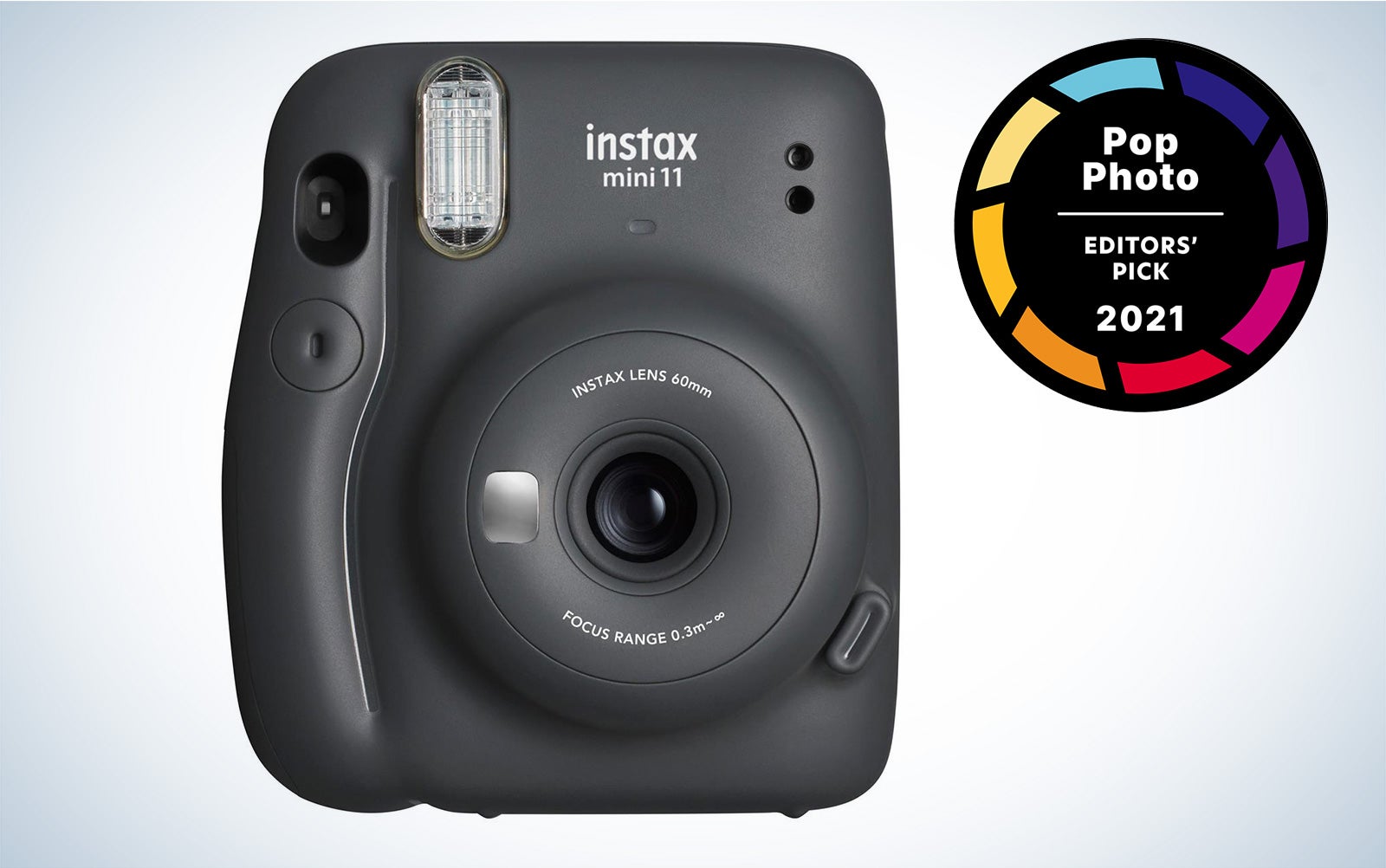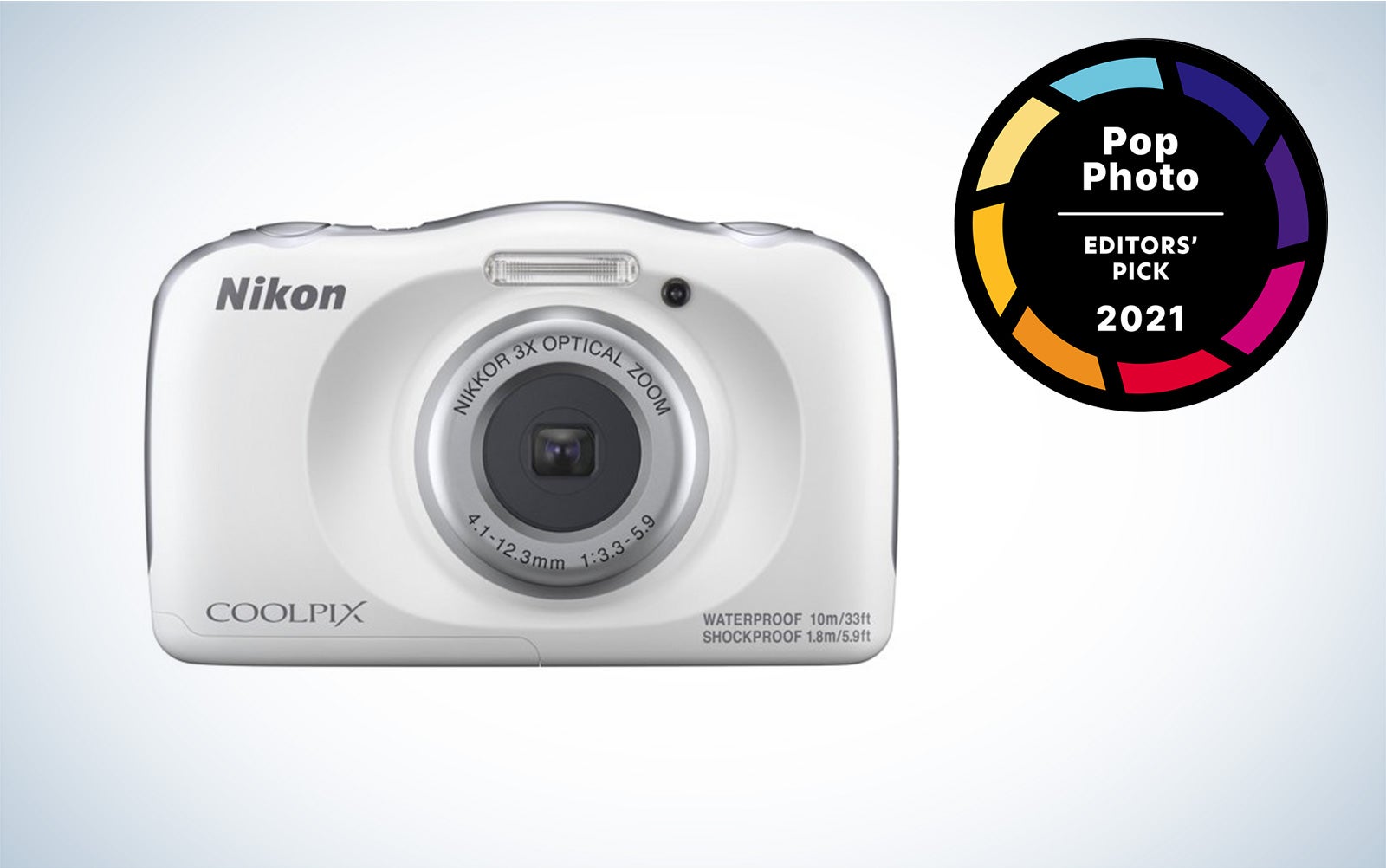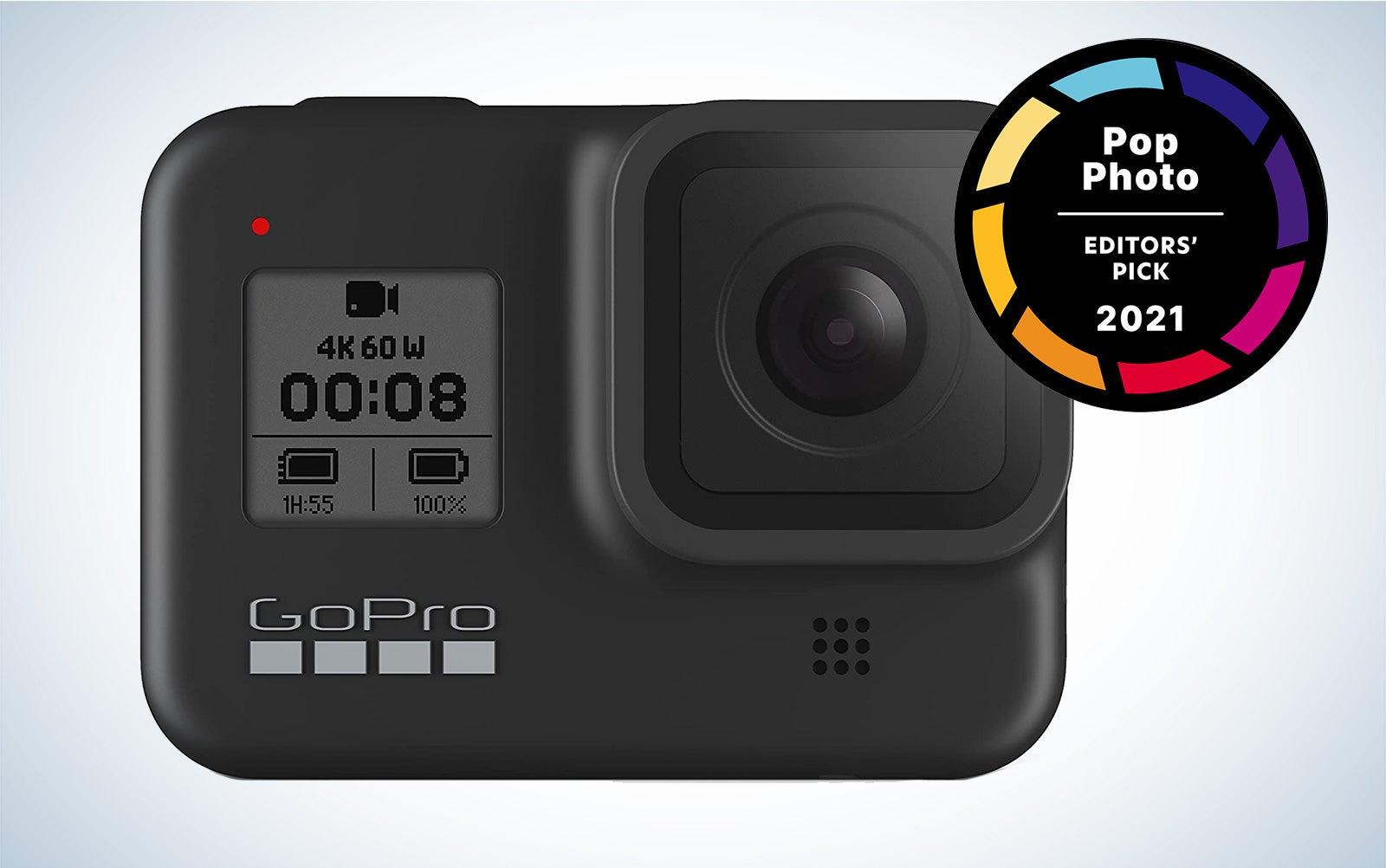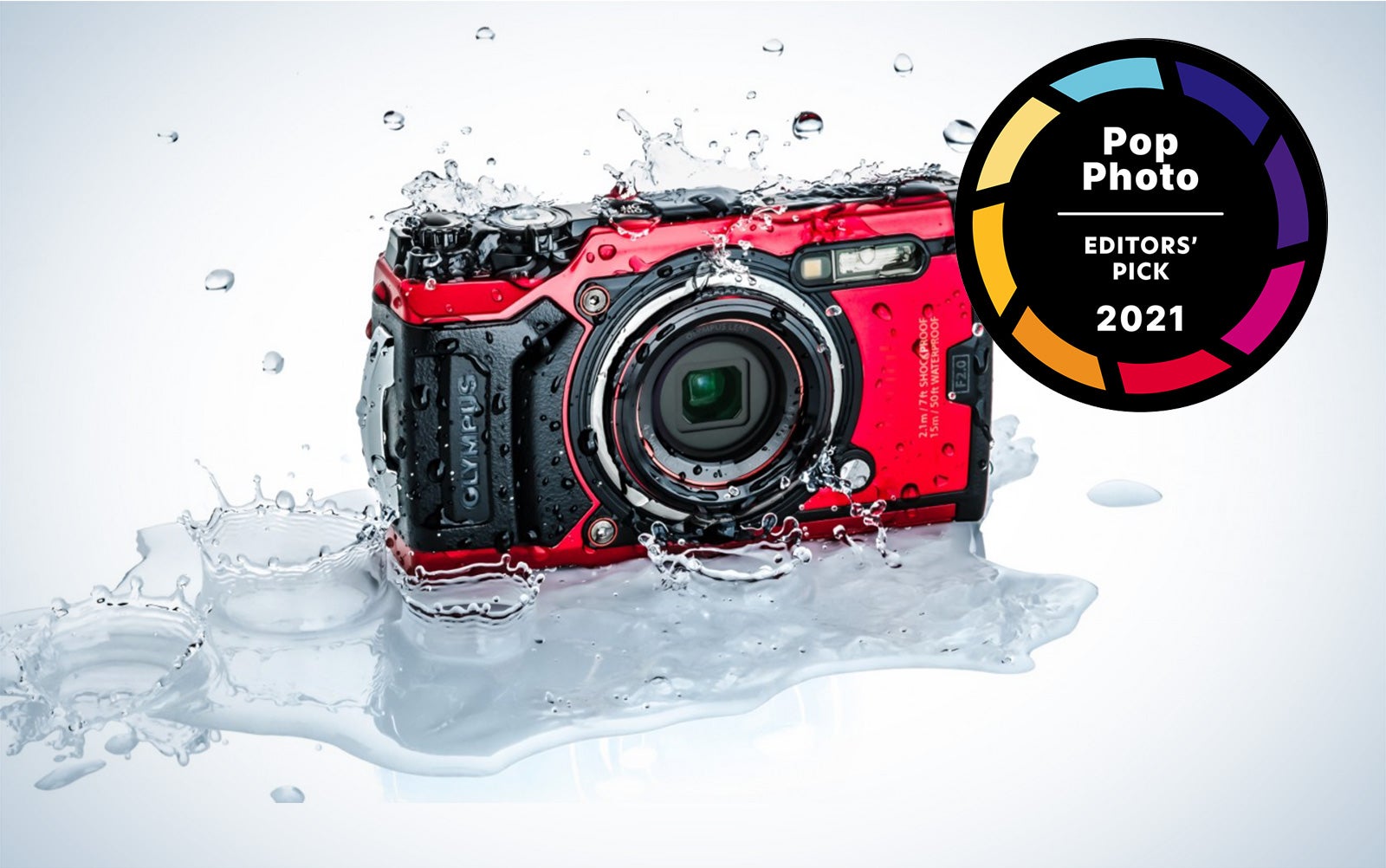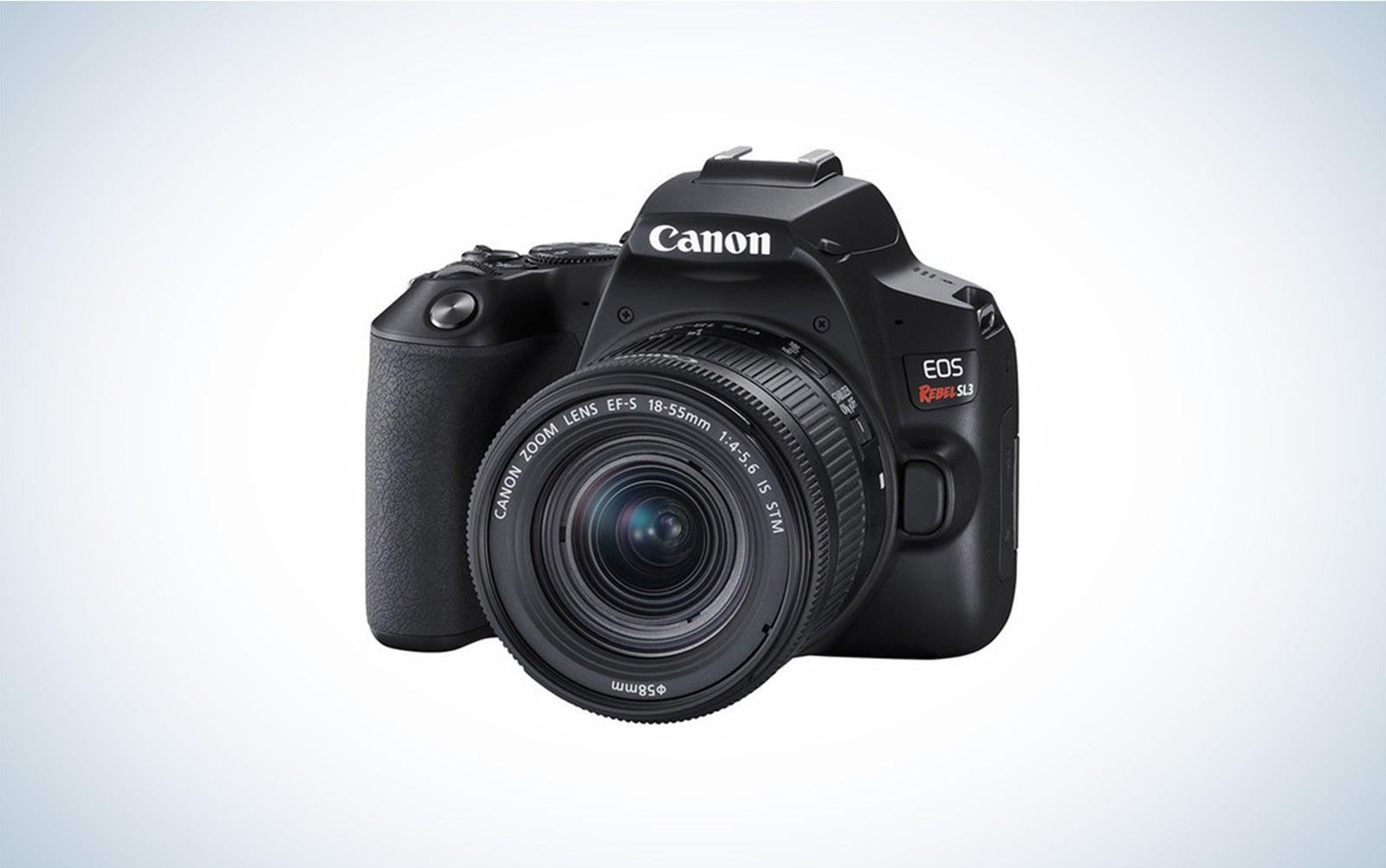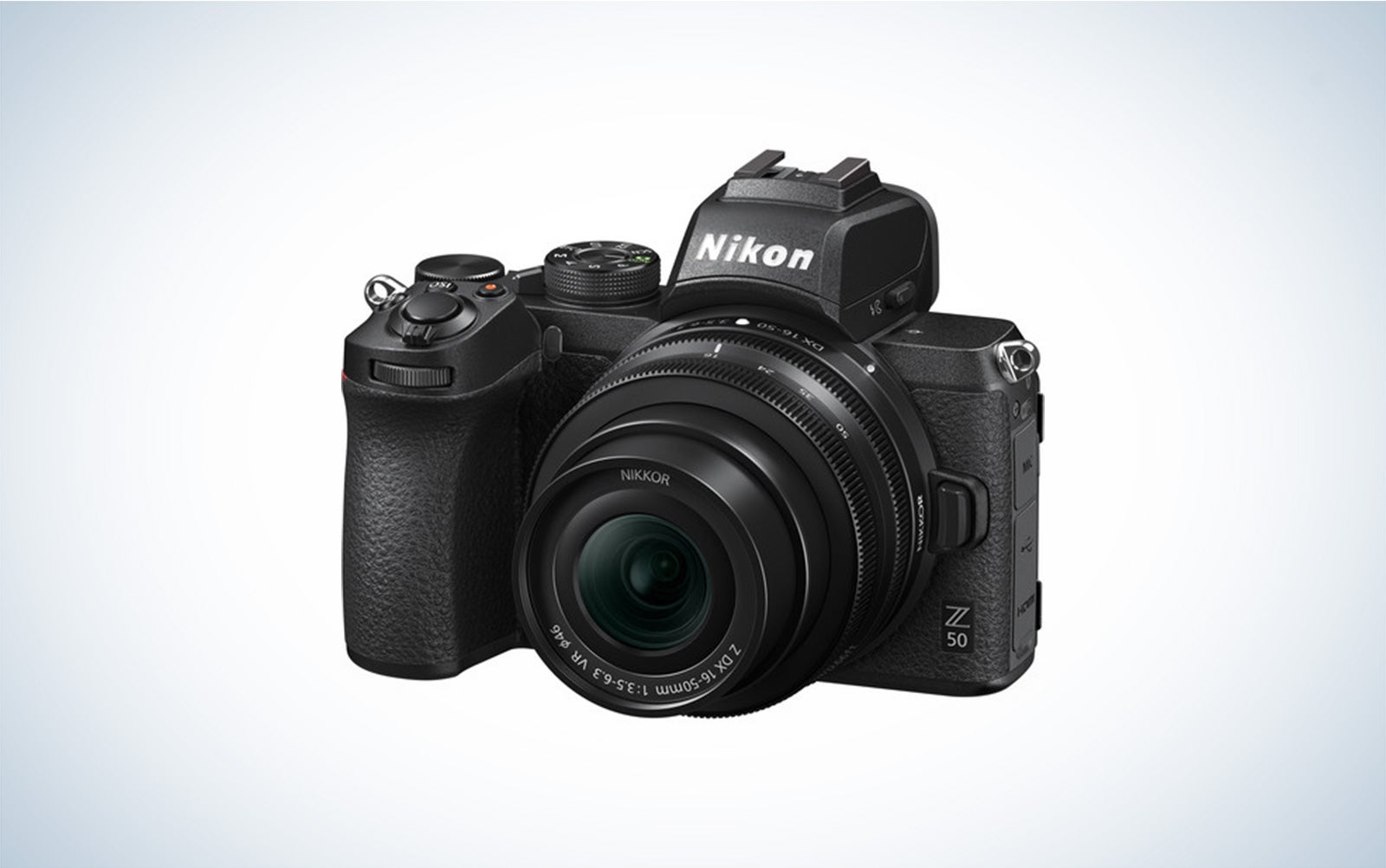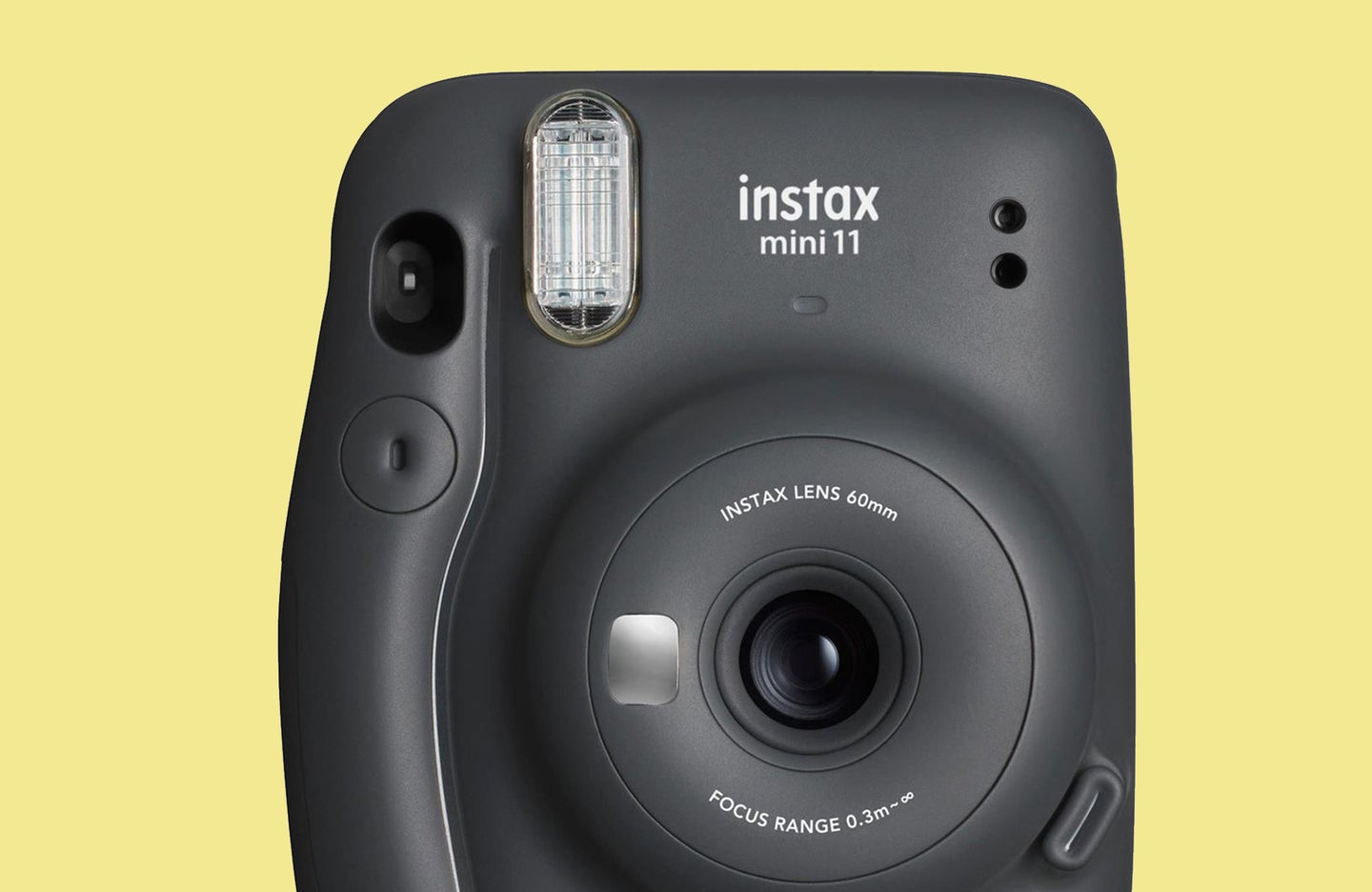
If you’re thinking of buying the best camera for kids, you might be tempted to simply buy them a smartphone since that’s how most adults capture photos and video these days: The Mylio blog reported that “mobile phones’ share of total photos worldwide is estimated to rise from an impressive 90% in 2021 to over 93% in 2023, according to Rise Above Research.”
So why bother with looking for the best cameras for kids? Here are a some compelling reasons:
- Rugged-and-waterproof cameras: Many parents know cellphones are pricey and easy to break. Almost anyone can drop an iPhone 13 or Google Pixel 6 onto a concrete driveway or into a bathtub or pool, which will either partially or totally damage the mobile device. However, camera companies make a few rugged-and-waterproof models that can withstand being dropped on the ground–some can withstand a fall from as high as seven feet. Some can also be submerged in water–some up to a depth of 50 feet or more underwater.
- Instant results: We also recommend a fun, inexpensive instant film camera, which produces prints almost instantly after you press the shutter-release button.
- Better point-of-view video: If your kids are on the go or like to capture video clips of themself surfing or biking, we recommend one GoPro, which can be used with a wide assortment of accessories to capture their adventures.
- Better quality, more versatility and models for lifelong learning: Our list also includes two interchangeable-lens cameras–a digital single-lens reflex or DSLR camera and a mirrorless camera, which are great for older kids and teenagers, who can produce photos and video that will most often be far superior to the results they get on their phones. That’s because they not only have higher quality camera and video features, but those features are far more versatile. And the features and capabilities found on these types of interchangeable lens cameras that will allow the kids in your life to learn about the fundamentals of photography.
Here are our recommendations for the best cameras for kids:
- Best overall: Olympus Tough TG-6 rugged
- Best budget: Nikon Coolpix W150
- Best for instant shots: Fujifilm Instax Mini 11 instant camera
- Best mirrorless camera for (older) kids: Nikon Z50 mirrorless camera with 16-50mm kit lens
- Best DSLR for (older) kids: Canon EOS Rebel SL3 DSLR with EF-S 18-55mm kit lens
- Best for video: GoPro Hero 8 action cam
Answer these questions if you’re looking to buy a camera for a younger or older child?
When you want to buy a digital camera in your child, ask yourself some of the following questions:
Step 1: How old is your child?
Here’s a rough guide by age for the type of camera your child might want:
- Age 4-9: A rugged-and-waterproof point-and-shoot is great for younger kids since they’re designed to withstand being dropped on the ground or in the pool.
- Ages 10-19: If your kids are interested in photography or just want to shoot better images, a DSLR or mirrorless camera can make a great gift.
- For kids of all ages: Action cams and instant print cameras make great gifts for both young and old kids.
Step 2: How interested is your child in photography?
Ask yourself: Is he or she interested in photography, or looking to shoot more professional-level looking photos of video? Do they already know some of the basics? If you think your kids might be interested in really learning about the fundamentals of photography, consider buying either a DSLR or mirrorless camera.
Step 3: Are there particular features that might be important to your child?
Cameras come with a wide assortment of features. Ask your child what features might be important to them. Here are some things to consider:
- Underwater photos and video: What’s great about rugged point-and-shoots, if you can capture photos underwater
- Optical zoom: Most point-and-shoots have between a 3x and 5x optical zoom. But there are some that have longer ranges, as much as 50x or 60x or greater, which are great for photographing sports or wildlife. And the Nikon Coolpix P1000 has such a long zoom that it can capture photos of the craters of the moon! However, rugged cameras generally have no more than 5x optical zoom.
- A camera’s grip: A camera that comes with a pronounced grip, like those found on many interchangeable-lens cameras, is always a useful feature.
- Swiveling LCD: A camera with a swiveling display are not only helpful when shooting selfies, but are great for composing hard-to-reach shots.
- Capturing video: If your child wants to capture good quality video, choose a DSLR or mirrorless camera for best quality, or an action cam, for point of view video.
- Trying new lenses: If you think your child would like to experiment with different types of lenses, for different photographic effects or points of view, you’ll want to buy either a DSLR or mirrorless camera, since they offer a wide selection of interchangeable lenses to choose from.
- Not interested in shooting digital: If your child isn’t interested in capturing digital photos, consider an instant film camera.
The best camera for kids of all ages in 2022
Best camera for kids overall: Olympus Tough TG-6
Olympus Tough TG-6
It’s not cheap, but it’s tough as nails and loaded with features. Olympus
Why It Made The Cut: For most families, this camera is a win-win: Kids can take it swimming with them, while parents know it won’t break making it our choice for the best camera for kids overall.
Key Features
- Type: Rugged-and-waterproof digital point-and-shoot camera
- Sensor type (size): CMOS image sensor (1/2.33 inches)
- Megapixels: 12 megapixels
- LCD: 3-inch swiveling touchscreen (1.04 millions dots)
- Video resolution: 4K@30p
Pros:
- Sturdy and waterproof
- Great for shooting underwater photos and video
- Has built-in GPS mode, for geotagging your photos
- Large 3-inch LCD
- Can capture 4K video
Cons:
- A little heavy for a point-and-shoot camera
- Expensive for a point-and-shoot with just decent image quality
This Olympus point-and-shoot, the latest of its Tough series of cameras, is waterproof to a depth of 50 feet underwater. You can also dive into a pool or the ocean without getting water into the interior of the camera. It’s shockproof since it’s able to withstand drops from a height of 7 feet. Plus, the TG-6 has an specially designed exterior to make it dustproof as well as freezeproof (to temperatures as color as 14 degrees F) and crushproof under a weight of 220 pounds.
But this point-and-shoot not only stands up to being dropped into the toilet onto a concrete sidewalk. It excels at capturing underwater photos and video clips, too. It has several shooting modes designed for underwater photography, including a high dynamic range mode and an underwater macro mode. You can attach converter lenses, including a fisheye-converter lens and adapter, to expand your photography options underwater.
It has only a 4x optical zoom lens (25mm-100mm equivalent zoom range), but the aperture at the wide end of the zoom is f/2.0. It can also shoot 4K/30p resolution video. It also has the ability to capture RAW files, in addition to JPEGs. Also, the door to both the battery and USB compartments have a switch that you can lock that will keep water out of the camera.
Best budget camera: Nikon Coolpix W150
Nikon Coolpix W150
Basic features and a low price tag make this a good option for smaller children. Nikon
Why It Made The Cut: An ideal choice for those looking for a budget-price point-and-shoot that’s rugged and waterproof.
Key Features
- Type: Rugged-and-waterproof digital point-and-shoot camera
- Sensor type (size): CMOS image sensor (1/ 3.1 inches)
- Megapixels: 13.2 megapixels
- LCD: 2.7-inch display
- Video resolution: 1080@30p (Full HD)
Pros:
- Waterproof to a depth of 33 feet
- Can withstand a drop from 5.9 feet
- Can capture underwater photos and video
- 2.7-inch LCD
- Can connect with other devices via built-in Wi-Fi and Bluetooth
Cons:
- Image quality is not as high as most other point-and-shoots
Our pick for the best budget camera is this rugged-and-waterproof point-and-shoot and is specifically designed for younger photographers. It comes with modes designed for shooting underwater: Its “Shoot Under Water” setting is an auto shooting mode designed for capturing photos underwater and its “Underwater Face Framing” setting automatically detects people’s faces below the surface. You can also use the “Add Clarity Under Water” editing function on the camera that corrects overly blue hues and adds clarity to underwater images. Most of the controls are also kid-friendly (as well as being adult- and senior-friendly ): The buttons are large and the interface is easy to read.
The camera does a decent job shooting photos and video on land, as well. It comes with 18 different shooting modes that lets you change your style to compliment your subject. The Nikon Coolpix W150 also has a “Picture-in-picture” function—to make your images appear as if they were taken on an instant print camera and then placed in front of the background of another picture.
It comes with a variety of in-camera effects, too, to make your images fun and attractive. Add the “Little Planet” effect to make a landscape look like a small planet or the “Curve Pictures” effect to make an image appear rounder. You can also decorate your shots with one of ten newly-designed decorative frames or stamps, like hearts, stars, ribbons and more.
Best instant camera: Fujifilm Instax Mini 11 instant camera
Fujifilm Instax Mini 11
You’ll need to keep buying film, but the instant gratification it provides is undeniable. Fujifilm
Why It Made The Cut: They’re among the easiest types of cameras for a child to use. They’re also fun for adults to use!
Key Features
- Type: Instant film camera
- Instant film type: Fujifilm Instax Mini instant film
- Film size: 2.1 × 3.4 inches
- Image size: 1.8 × 2.4 inches
Pros:
- Easy to use
- Instant results
- Run on two AA batteries, which is convenient
- Comes in five colors: White, pink, gray, purple and blue
Cons:
- Difficult to produce a photo with very good or excellent quality
- Not versatile
- Can’t edit your image
Several years ago, instant film cameras began to re-emerging in a variety of stores, including hip retail outlets like Urban Outfitters. One of the reasons they were, and continue to be, popular is that they give consumers, particularly young adults, teenagers and children, the ability to quickly shoot and get a real, physical photo, instantly.
This model isn’t all that different from past versions of the Fujifilm Instax cameras, although this model comes with a selfie setting: To create a selfie or a close-up photo, pull on the front of the lens and the lens will extend and reveal a sticker that reads “Selfie on.” Then simply extend your arms and point the lens towards your face. Of course, this Instax does not include a display and LCD to compose your images–so if you’re shooting a selfie, you won’t be able to see how you’re composing it. You’ll just have to guess, but that’s part of the fun.
However, Fujifilm Instax Mini 11 is very easy to use and to operate. So, it’s the best instant camera that’s ideal for children, even as young as four or five.
Best mirrorless camera for (older) kids: Canon EOS Rebel SL3 with 18-55mm kit lens
Canon EOS Rebel SL3
This entry-level DSLR offers room for aspiring photographers to grow into its more manual features. Canon
Why It Made The Cut: A DSLR that’s ideal for an older child who wants to learn about the fundamentals of photography
Key Features
- Type: DSLR
- Sensor type (size): CMOS image sensor (APS-C)
- Megapixels: 24.1 megapixels
- Lens mount: Canon EF/EF-S lens mount
- LCD: 3.0-inch swiveling touchscreen
- Video resolution: 4K@24p
Pros:
- Small, compact and easy to use
- Kit lens is image stabilized
- Comes with a swiveling touchscreen LCD
- Includes a high quality through-the-lens viewfinder
Cons:
- 4K resolution video has a top frame rate of just 24 frames per second
- The lens lacks a very wide-angle end of the zoom (due to the 1.6 crop factor)
A common complaint that some photographers have when they’ve decided to switch to using a DSLR is that the interchangeable-lens camera is generally much larger and heavier than a point-and-shoot or a mobile device. That’s why Canon built the compact and lightweight EOS SL-series of Rebel DSLR camera bodies: It allows young photographers to use Canon’s extensive DSLR system of compatible lenses and other accessories with weighing them down.
It uses its powerful and accurate Dual Pixel CMOS AF, which can also detect eyes using Eye Detection AF. It comes with a touchscreen LCD that gives you access to settings, the ability to review images and the ability to use the live-view display to focus your image. It also has several assist modes that can help your older child quickly learn about settings, including Creative Assist, Feature Assistant and Shooting Mode guide.
What’s also nice is that the kit lens that comes with this Canon Rebel has an optical image stabilizer built into the lens, which can help you catch sharper images in challenging lighting scenarios, like low light.
Its Canon EF mount makes it compatible with a ton of older lenses, many of which can be very affordable, so options grow as their skills progress.
Best mirrorless camera for (older) kids: Nikon Z50 with 16-50mm kit lens
Nikon Z50
This is a great starting point for young photographers looking to jump into mirrorless. Nikon
Why It Made The Cut: A mirrorless camera that’s ideal for an older child who wants to learn about the fundamentals of photography
Key Features
- Type: Mirrorless camera
- Sensor type (size): CMOS image sensor (APS-C)
- Megapixels: 20.9 megapixels
- Lens mount: Nikon Z lens mount
- LCD: 3.2-inch swiveling touchscreen LCD
- Video resolution: 4K@30 fps
Pros:
- Small, compact and easy to use
- Kit lens is image stabilized
- Comes with a swiveling touchscreen LCD
- Includes a high quality electronic viewfinder
Cons:
- Camera lacks built-in image stabilization (unlike Nikon’s full-frame Z-series mirrorless cameras)
Like the Canon EOS SL3, the Nikon Z50 is also an interchangeable-lens camera. However, it’s not a DSLR. Instead, this Z-series Nikon is part of its mirrorless camera line, although it is Nikon’s first Z-series mirrorless model with a “DX-format,” which uses an APS-C-sized image sensor (instead of the larger full-frame image sensor).
The Nikon Z50 also comes with a lot of powerful features, including a wide ISO sensitivity range from ISO 100 to ISO 51,200, which can be helpful for shooting in low light. It has a built-in pop-up flash, built-in Wi-Fi and Bluetooth features and a large 3.2-inch swiveling touchscreen LCD. It’s fast, too, allowing you to fire off images at a rate of up to 11 frames per second in burst mode. It comes with a very sharp electronic viewfinder, with 2.3-million dots. And you have access to creative filters—with 20 different controls and effects for video.
Like the Canon EOS SL3 kit, this Nikon comes with Nikon’s Nikkor Z DX 16-50mm f/3.5-6.3 VR zoom kit lens, which includes an image stabilizer for better quality still photos.
Once the child gets older, they can add more lenses and expand their options.
Best video camera: GoPro Hero 8 action cam
GoPro Hero 8
Built for abuse, this pint-sized camera offers many of the features found in the current model, which is a lot more expensive. GoPro
Why It Made The Cut: Because it is older than more current GoPro models, you can get a great deal on this still very capable action cam.
Key Features
- Type: Action cam
- Sensor type (size): CMOS image sensor (1/ 2.3 inches)
- Megapixels: 12 megapixels
- LCD: Approximately 2-inch touchscreen display
- Video resolution: 4K resolution/60 fps
Pros:
- Very lightweight and compact
- Easy to use
- GoPro systems includes many useful accessories
- Lots of options for not just video, but photos and time lapse
Cons:
- Fewer physical controls than those found on digital cameras
- Lacks an optical zoom lens
Action cams, like the GoPro Hero 8, are great for those who like to take part in outdoor sports and activities such as biking or snowboarding, and want the ability to capture hands-free footage. Earlier GoPro models used to lack some features, like a touchscreen LCD or any sort of image stabilization. But more recent models, including the Hero 8, include these two features, which makes this the sweet spot when it comes to features and price.
The Hero 8 also comes with some cutting-edge audio technology, such GoPro voice commands, which can be helpful if your GoPro is mounted on your helmet or another hard-to-access spot. With the voice commands feature, you can simply utter one of several commands, such as “GoPro Start Recording,” “GoPro Start Time Lapse,” or “GoPro Take a Photo,” and the GoPro will carry out that operation.
The GoPro Hero 8 also has a rugged exterior design (without needing to use a housing) that allows you to take it underwater to a depth of 33 feet. Plus, it comes with high-dynamic range features to improve your still photos. Like most action cams, the GoPro Hero 8 stores photos, video and other media on microSDHC and microSDXC memory cards.
A huge arsenal of GoPro accessories and mounts add versatility. Even the smallest child can get some cool POV shots while running around on the playground wearing a chest-mounted GoPro making this camera our pick for the best video camera for kids.
FAQs
Q: How is an instant film camera different from a digital camera?
the latter isn’t digital: An instant camera is a type of analog (or non-digital) camera that uses self-developing film to produce a photo that is printed out by the device shortly after the image is captured, which is very different from digital cameras, which captures an image by using a camera lens to focus light onto an image sensor. Instant film cameras are based on a type of camera invented by Polaroid in the late 1940s.
Q: What’s the difference between a digital camera and an action cam?
An action cam (which is short for “action camcorder”), like a GoPro, the most popular brand that makes action cams, is a camera that’s been specifically designed to be very portable. They’re much more compact and lightweight than most digital cameras, including point-and-shoots. They’re also pretty easy to use. However, they sometimes lack the versatility and quality you’ll find on even basic point-and-shoot digital cameras. They’re often used by people engaged in action and adventure sports, like surfing, skiing and biking, but they’re used in many other activities. They’re also known for the type of footage they capture, which is known as point-of-view video.
Q: What’s a digital interchangeable-lens camera?
As you might guess from the name, a digital interchangeable-lens camera is a digital camera that allows you to attach and remove a lens from the camera body, unlike point-and-shoot cameras, which have lenses that can’t be removed from the camera body. This type of design allows you to not only use different types of lenses—wide-angle, telephoto, prime, zoom, macro and other types—with your camera, but you can improve the image quality of your photos or video clips by buying higher quality lenses.
Professional photographers as well as those in the camera industry often refer to a camera body and compatible lenses as a camera system. Presently, there are two interchangeable-lens camera systems available to consumers: Digital single-lens reflex or DSLR camera systems and mirrorless camera systems.
Methodology
The writers and editors at Popular Photography have combined decades of experience in the photography and camera world. To select the best cameras for kids, we identified models that would address the specific needs for kids of various ages. We have selected an assortment of cameras that provide an easy starting point for those just learning. But, at the same time, these cameras produce high enough image quality (and often manual control options) that will grow with them as they get older and improve their skills.
We also put an emphasis on durability. Kids are tough on gadgets and a broken camera can’t make great pictures. So, we picked models that will likely stand up to the abuse that comes from kid usage. Lastly, we suggested models that aren’t overly expensive. Some certainly still aren’t cheap, but they also aren’t going to come anywhere close to a pricy pro offering.
A final word on shopping for a camera for a kid
Although it can be challenging to find some new digital camera models, you should keep an eye out for models that are three or four years old or even older. Why? Quite often, there are only incremental changes that camera companies make to newer cameras. That oftentimes means you’ll be able to pick up a discontinued camera for a great price, on eBay or other auction websites.
You can also find great deals if you buy a refurbished model, or a model that has been returned to a retailer or manufacturer and restored. You’ll find refurbs online and in brick-and-mortar stores.
The post Best cameras for kids of all ages appeared first on Popular Photography.
